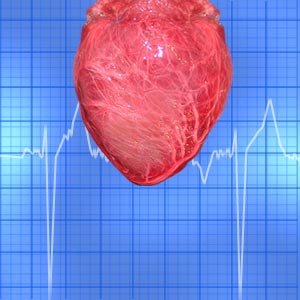Improving Blood Circulation

The right amount of blood flow is
crucial to existence as it keeps the heart pumping, legs moving and brain
functioning. And if you experience pain when you walk or your leg is seen
swelling below the knees or feels tight persistently, then you are suffering
from poor blood circulation.
Poor blood circulation is a leading cause and common symptom of
high blood pressure, although this need not be the only reason. There are many
ailments and lifestyle disorders that can go to cause poor blood circulation.
Most prominent of them include diabetes, anemia, varicose veins and blood
vessel disorders, heart disorders, circulatory disorders, thyroid disorders,
pneumonia, pregnancy, artificial insufficiency, nerve disorders, asthma and bronchitis.
Lifestyle disorders include obesity, inactivity, smoking, bad postures, regular
sitting or standing in one position and poor diet.
Essence of blood circulation
Certain substances like cholesterol or blocked arteries can cause the blood flow to slow down. When
blood cannot reach every part of the body several health consequences occur. In
this process even the brain gets affected. Decreased blood flow to the brain
can cause several ailments such as dizziness, breathlessness, inability to
think clearly and decrease in motor functioning.
Poor blood circulation also leads to blood clots, which can be the cause of amputation, heart attack, stroke and even death. Hence, it is imperative that immediate treatment is sought for any issue concerning circulation.
Poor blood circulation in the legs
A common cause for restricted flow of blood in the legs is 'peripheral vascular disease'. In addition to PVD, other major causes for poor blood circulation includes smoking, obesity, lack of exercise, high blood pressure, high cholesterol, diabetes, pregnancy, nerve and thyroid conditions, sitting in a cramped position for long durations.
The sole of the feet consists of a series of large veins called Venous Plexus. These veins are stretched when one walks and blood squeezed out. Thus blood is back from the extremities of the feet to the heart in a natural way.
The blood that is returning to the heart has to fight against gravity and pushed up mainly by Venous Plexus in conjunction with the calf muscles. During this process, there could be valves inside the veins that can stop the blood from going backwards. In the absence of stimulation from both the mechanisms, blood begins to pool and get clotted. This eventually leads to degeneration.
The major problems caused by poor leg circulation are swollen legs, cold and numb feet as well as pain the calves and legs. Poor leg circulation manifests as cramping or fatigue in the legs, feet and buttocks. Although the pain may diminish with rest, it is bound to recur. Blood clots that can occur to persons with poor blood circulation are referred to as 'deep vein thrombosis'. This happens when the vein is damaged and if blood flows slows down or stops completely. Obese persons above age 40 run the risk of DVT.
Some common relief solutions for poor leg circulation are suggested below.
- Cigarette smoking be avoided
- Blood pressure kept under check
- Cholesterol within levels of healthy range
- Regular exercise
- Special exercise equipment
- Avoiding immobility for long durations
- Keeping feet and extremities warm
- Use of compression hosiery socks that can help stimulate circulation
As poor leg circulation is a condition that can pose serious health consequences, it is better to consult a physician immediately. Several medications are available to treat blood circulation in the legs and help in prevention.
Improving blood circulation:
- For immediate relief from bad circulation the muscles
should get moving. This can be done very simply through
walking or exercises.
- Otherwise, effective devices like therapeutic electrical stimulants
which are easy to use are available to work and help circulate blood. This
is used by vascular surgeons, doctors and health care providers to improve
blood circulation through electro stimulation.
- Circulation booster socks are a modern technological device for persons who are
bedridden or who seek long distance travel.
- Massage therapy and hydro massage therapy help improve blood circulation and
reduce high blood pressure. Massage is another way to help muscles push
blood back to the heart through the veins. This helps to increase the
vital oxygen necessary to keep tissue from deterioration that lead to
ulcer and to gangrene of the leg.
In massage therapy, pressure points on the foot soles, ankles and calves are massaged thereby stimulating muscles which push blood back to the heart. Thermal bath massage works by pumping air with or without ozone through hydro jets set to aim different target muscles in the body.
- Hydro therapy
as the name suggest, is use of hot and cold water that can affect the
blood vessels in a special manner. While the hot water causes blood
vessels near the surface of the skin to dilate and make more blood flow,
the cold water cools down and maintains the right temperature. Cold water can
cause the vessels to restrict and keep blood away from the surface.
- It is necessary to take adequate precautions in case
of pregnancy, suffering from neuropathy, or fitted with implant device
like pacemaker and in case of injury before undergoing any therapies for
improving blood circulation.
- In severe cases, one may have to undergo surgery such as Angioplasty. This
is a procedure that helps to improve blood circulation by using a catheter
to open a balloon inside the artery. Now the blood can flow more freely.
- Alternate medicine suggests several herbs
to a robust circulatory system. For instance cayenne and pepper help to
strengthen and tone up the capillaries and blood vessels. Hawthorne berries and
rosemary can control blood pressure while garlic and onions encourage
improved blood circulation by lowering cholesterol levels. However, it is
essential to consult health care professional before consuming any new
herbs.
- A proper diet
can help in improved blood flow and body functions. Intake of Vitamin E improves
blood circulation. Nuts and avocados and unrefined vegetables are good source
of Vitamin E. Ample intake of nutrients lessen the need for oxygen, dilute
clots, and aids in formation of blood vessels. Choline and Vitamin B6 and
inositol fight for a healthy blood cholesterol level. Consuming a diet with
adequate amount of these vitamins reduce medication requirements to optimize
circulation.
Top of the Page: Improving Blood Circulation
Tags:#improving circulation #bad circulation #poor leg circulation #improving blood circulation #increase circulation
 Healthy Habits for Women
Healthy Habits for Women Obesity indicator - ABSI Calculator
Fighting Diabesity
Depleted Immune System
Gonzalez Regimen for Cancer
Irritable Bowel Syndrome
Inflammatory Bowel Disease
Healthy Eating Habits
Diabetes Prevention Tips
Ankle Edema
Deep Vein Thrombosis
Colon Cleansing
Women and Substance Abuse
Water Retention Causes
Improving Blood Circulation
More on Women Health
 Shortness of Breath
Shortness of Breath Eosinophilic Esophagitis
Feminine Hygiene
Nail Fungus
Antidepressants and Weight Gain
Iron deficiency Anemia
Avian Flu Pandemic
Mood swings and women
Medical Alert Devices
Hypokalemia
Metabolic Syndrome X
Heat Stroke
Altitude Sickness
Body Sculpting
Gout Symptoms
Polymyalgia Rheumatica
Systemic Lupus
Reflex Sympathetic Dystrophy
Carcinoid
Chronic Sciatica
Diet and Kidney Disease
Loss of Appetite
Suppress Appetite
How to Improve your Memory
Short Term Memory Loss
Leg Cramps at Night
Top of the Page: Improving Blood Circulation
Popularity Index: 100,830

